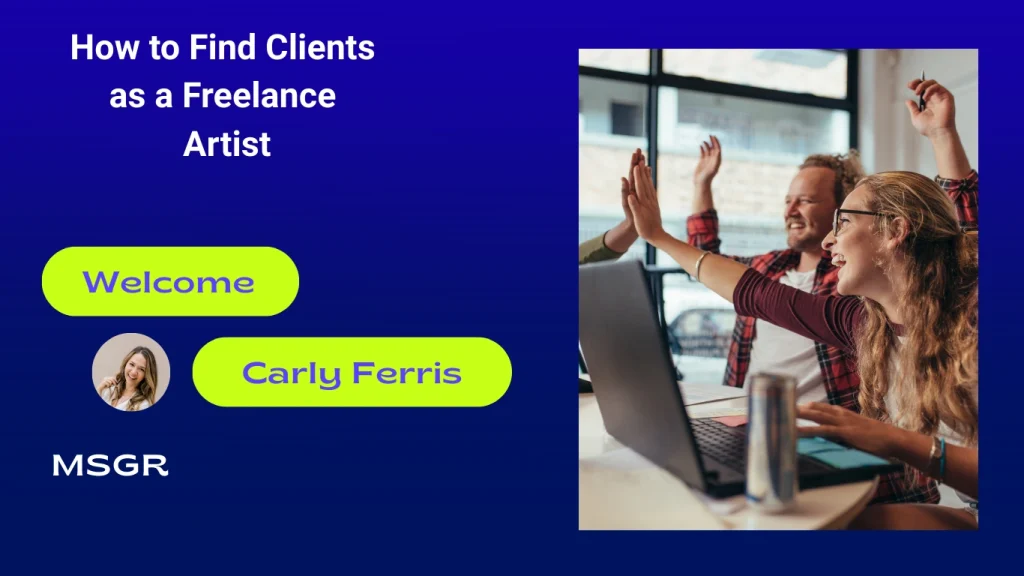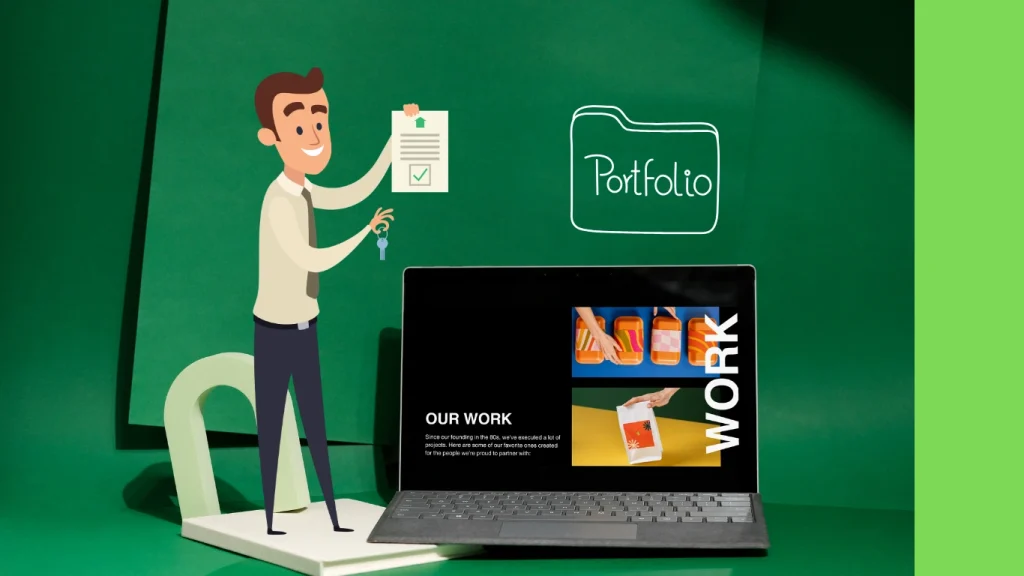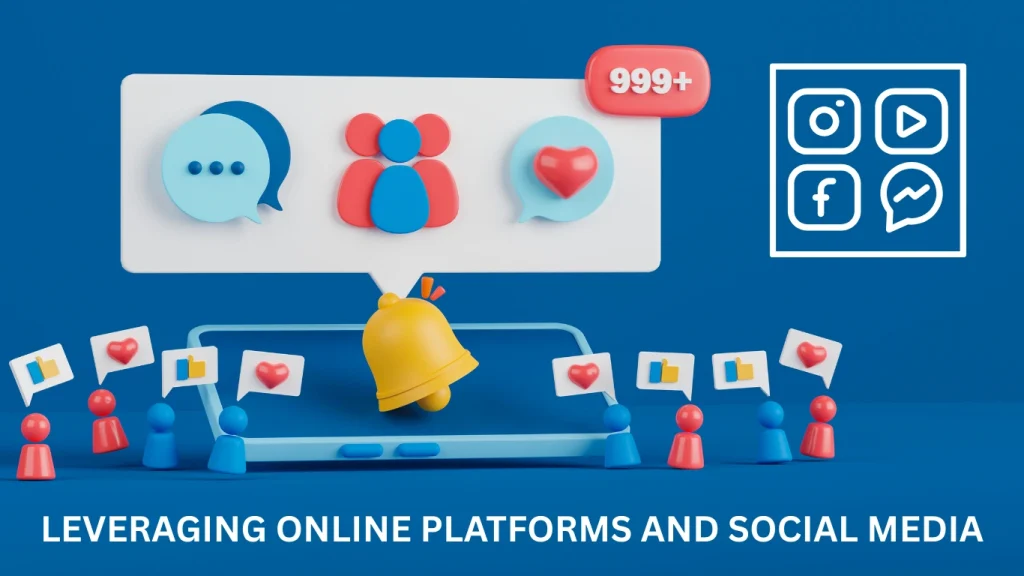Introduction
If you’re wondering how to find clients as a freelance artist, you’re not alone. Whether you create illustrations, portraits, concept art, or digital designs, landing high-quality clients is one of the most common challenges in a freelance art career.
The freelance art market is competitive, but with the right strategy, you can consistently attract well-paying clients and avoid relying on low-paying jobs from overcrowded platforms. In this in-depth guide, we’ll explore 10 powerful, actionable methods to get freelance art clients—based on real-world advice from successful artists, freelancers, and industry experts.
By the end of this article, you’ll have a clear roadmap for building a strong portfolio, marketing yourself effectively, and securing steady, profitable work as a freelance artist.
How to Find Clients as a Freelance Artist: A Complete Guide

The freelance economy has experienced explosive growth over the past decade, with creative professionals leading the charge. According to recent studies, over 36% of the U.S. workforce now freelances in some capacity, and artists represent one of the fastest-growing segments of this market. Yet many talented artists struggle with the same fundamental challenge: finding paying clients.
The shift from creating art for personal fulfilment to building a sustainable freelance business requires a different set of skills. You need to become part marketer, part salesperson, and part business strategist—all while maintaining your creative edge. The good news? Learning how to find clients as a freelance artist is entirely achievable with the right approach and consistent effort.
This guide will walk you through proven strategies that successful freelance artists use to attract and retain clients. From building an irresistible portfolio to mastering client communication, you’ll discover actionable steps to transform your artistic passion into a thriving freelance career.
How to Find Freelance Clients as an Artist
Finding freelance clients can feel challenging, but with the right approach, you can build steady work and grow your career as an artist. Here are some simple steps to get started:
1. Build a Strong Online Presence
-
Create a Portfolio: Show your best work on platforms like Behance, Dribbble, or your own website.
-
Personal Website: Include your portfolio, services, and contact info in one place.
-
Be Active on Social Media: Use Instagram, LinkedIn, or Twitter to share your art and connect with people.
-
SEO: Use keywords like “freelance illustrator” so clients can find you online.
2. Network and Reach Out
-
Start with Your Circle: Let friends, family, and acquaintances know you’re available.
-
Use Freelance Platforms: Sites like Fiverr, Upwork, and Guru have plenty of opportunities.
-
Attend Events: Visit art fairs or networking events to meet clients in person.
-
Join Communities: Be active in Facebook groups, forums, or Discord servers for artists.
-
Collaborate: Partner with other artists or professionals to expand your reach.
3. Offer Value and Stand Out
-
Pick a Niche: Specialize in a style or industry so clients see you as the go-to person.
-
Show Your Strengths: Highlight what makes your work unique.
-
Provide Solutions: Explain how your art can help clients reach their goals.
-
Free Samples or Consultations: Give potential clients a taste of your skills.
-
Ask for Reviews: Collect testimonials to build trust.
4. Manage Your Freelance Business
-
Stay Organized: Track projects, clients, and communication.
-
Use Tools: Manage time, invoices, and expenses with apps.
-
Keep Learning: Improve your skills and stay updated with trends.
-
Be Professional: Respond quickly, deliver quality, and communicate clearly.
Finding clients as an artist takes effort, but if you show your work, connect with people, and deliver value, opportunities will come. Start small, stay consistent, and over time you’ll build a strong client base.
10 Proven Steps Every Artist Can Use to Get Freelance Work
1. Identify Your Niche and Ideal Clients
Before you can successfully find clients, you need to define exactly who you want to work with. Specialising makes you more attractive to clients who want an expert in their specific area.

Examples of niches for freelance artists:
-
Illustration for children’s books
-
Concept art for video games
-
Portrait commissions
-
Branding and character design
-
Comic book and graphic novel art
-
Editorial illustration
A clearly defined niche helps you:
-
Stand out from generalist artists.
-
Target your marketing to the right audience.
-
Price your work more competitively.
💡 Pro Tip:
Use tools like Behance to research your niche and see what top artists are creating.
2. Build a Portfolio That Sells
Your portfolio is your digital storefront. Potential clients will judge your skills and professionalism based on it.
Portfolio essentials:
-
Showcase your best 8–12 pieces.
-
Include a short description for each artwork (client brief, concept, tools used).
-
Organise by category (illustrations, branding, book covers, etc.).
-
Add a clear Contact Me section.
Where to host your portfolio:
-
Your own website (e.g., “confidenceit.net”)
-
Art-specific platforms: ArtStation, Behance, DeviantArt
-
Social platforms: Instagram, Pinterest
Building a Strong Portfolio That Attracts Clients:

Your portfolio is your most powerful sales tool. It’s often the first impression potential clients have of your work, so it needs to be exceptional.
Start by curating only your best pieces. Quality trumps quantity every time. A portfolio with 10-15 outstanding works will outperform one with 50 mediocre pieces. Choose artwork that demonstrates your range while staying true to your unique style and the type of work you want to be hired for.
Organisation matters just as much as the artwork itself. Group similar pieces together and present them in a logical flow. If you work in multiple styles or mediums, create separate sections for each. Include brief descriptions that explain your creative process or the story behind each piece—this helps clients connect with your work on a deeper level.
Make your portfolio easily accessible online. A professional website is essential, but you should also maintain profiles on visual platforms like Behance, Dribbble, or Instagram. Each platform serves different purposes and reaches different audiences, so tailor your presentation accordingly.
3. Leverage Social Media for Art Marketing
Social media is one of the most effective ways to find freelance art clients in 2025.
Best platforms for freelance artists:
-
Instagram: Great for visual storytelling; use art process reels.
-
TikTok: Time-lapse videos, behind-the-scenes content.
-
Pinterest: Pin portfolio images with links to your site.
-
LinkedIn: Network with business owners and agencies.
-
Twitter/X: Share work-in-progress and connect with other creatives.
Tips for success:
-
Post consistently (3–4 times per week).
-
Use relevant hashtags (#digitalart, #illustratorforhire, #conceptart).
-
Engage with other artists and potential clients.
Leveraging Online Platforms and Social Media
Digital platforms have revolutionised how freelance artists find clients. Each platform serves different purposes and attracts different types of buyers.

Freelance marketplaces like Upwork, Fiverr, and 99designs can provide steady work, especially when you’re building your client base. Success on these platforms requires strategic positioning. Create detailed profiles that highlight your unique strengths and include keywords your ideal clients might search for. Start with competitive pricing to build reviews and ratings, then gradually increase your rates as your reputation grows.
Social media platforms offer powerful opportunities to showcase your work and attract clients organically. Instagram excels for visual artists, while LinkedIn connects you with business professionals who might need creative services. TikTok has emerged as a surprising platform for artists, with many finding clients through viral videos showing their creative process.
Consistency is crucial across all platforms. Regular posting keeps you visible in feeds and demonstrates your ongoing commitment to your craft. Use relevant hashtags to help potential clients discover your work, but avoid overusing them—focus on quality, targeted tags rather than quantity.
Consider creating content that educates your audience about your artistic process. Time-lapse videos, before-and-after comparisons, and tutorials position you as an expert while showcasing your skills. This type of content often performs better than simple portfolio pieces because it provides value to viewers.
4. Network Online and Offline
Networking is a powerful way to attract clients—many artists find their biggest projects through personal connections.
Online networking tips:
-
Join Facebook groups for art commissions.
-
Participate in Reddit communities like r/ArtBusiness or r/HungryArtists.
-
Be active in Discord art servers.
Offline networking ideas:
-
Attend local art fairs and exhibitions.
-
Join creative meetups or coworking spaces.
-
Partner with local businesses for mural or illustration work.
💡 Case Study:
An artist on Reddit shared that most of their clients came from unexpected in-person encounters, like meeting someone in a coffee shop.
Networking Strategies That Actually Work:

Networking remains one of the most effective ways to find freelance clients, but it’s evolved far beyond traditional business cards and conference handshakes.
Start within your existing circle. Friends, family, and former colleagues can become your first advocates. Let them know about your freelance services and ask them to refer anyone who might need artistic work. Word-of-mouth recommendations carry tremendous weight because they come with built-in trust.
Attend industry events, but approach them strategically. Art shows, design conferences, and creative meetups aren’t just about collecting contacts—they’re about building genuine relationships. Focus on learning about others’ needs and challenges rather than immediately pitching your services. When you do connect with someone promising, follow up within 48 hours with a personalised message.
Join online communities where your potential clients gather. Facebook groups, Reddit communities, and industry-specific forums can be goldmines for finding opportunities. Participate authentically by offering helpful advice and sharing your expertise before promoting your services.
Consider collaborating with other freelancers who serve similar clients but offer different services. A web designer might refer clients who need illustrations, while a copywriter might know businesses looking for visual content. These partnerships can create a steady stream of referrals.
5. Use Freelance Job Platforms Wisely
While platforms like Fiverr and Upwork can be competitive, they can still work if used strategically.
Tips for success on freelance platforms:
-
Create a niche-specific gig (e.g., “I will create hand-painted watercolour pet portraits”).
-
Use professional images in your gig gallery.
-
Deliver exceptional service to earn 5-star reviews.
-
Gradually increase your rates after you have received reviews.
6. Cold Outreach and Direct Pitching
Sometimes the fastest way to land a client is to reach out directly.
How to do cold outreach:
-
Identify potential clients (publishers, game studios, agencies).
-
Research their brand style and needs.
-
Send a personalised email including:
-
Brief introduction.
-
How your art style can help their projects.
-
Link to your portfolio.
-
Example cold email subject line:
“Illustrator for your upcoming fantasy book series”
7. Get Referrals from Past Clients
Happy clients are your best promoters. After completing a project, ask them for referrals or testimonials.
How to encourage referrals:
-
Offer a small discount for referred projects.
-
Ask for a testimonial and showcase it on your website.
-
Maintain relationships by checking in every few months.
8. Collaborate with Other Creatives
Partnering with writers, designers, photographers, and marketers can lead to cross-referrals.
Collaboration ideas:
-
Illustrate a children’s book for a writer.
-
Create custom artwork for a musician’s album cover.
-
Partner with graphic designers for branding packages.
9. Position Yourself as an Expert
Establishing authority in your niche will make clients come to you.
Ways to position yourself:
-
Start a blog about your art process and industry tips.
-
Create YouTube tutorials or art livestreams.
-
Speak at art events or online webinars.
Example external link for credibility:
How to Market Your Art Online – Artsy Shark
10. Maintain a Strong Client Roster
Don’t rely on just one client—spread your workload across several. Aim for 3–5 regular clients and supplement with one-time commissions.
Extra income sources for artists:
-
Selling art prints on Etsy.
-
Offering digital downloads on Gumroad.
-
Teaching art classes online.
Extra Tips on how to find clients as a freelance artist

Marketing Yourself as a Creative Professional
Effective self-marketing goes far beyond simply posting pretty pictures online. It’s about building a cohesive and memorable brand that clearly communicates your unique value proposition to potential clients. When you market yourself strategically, you’re no longer just an artist; you become a trusted creative professional who clients want to hire again and again.
Define Your Niche Clearly
While versatility has its place, specialising in specific types of art or serving particular industries makes it easier for clients to understand what you do and why they should hire you. Are you the go-to artist for book cover illustrations? Do you specialise in designing logos for restaurants? Or maybe your expertise lies in creating vibrant concept art for video games. Clear positioning not only helps clients find you more easily but also makes you more memorable and referable within your market.
Develop a Consistent Visual Identity
Your brand should be reflected consistently across all your marketing materials—your website, business cards, social media profiles, email signature, and even your proposals. This consistency in visual style and professionalism reassures clients that you pay attention to detail and care about quality, both essential traits for a freelance artist.
Create Valuable Content That Showcases Your Expertise
Content marketing is one of the most powerful ways to establish yourself as an expert. Write blog posts explaining your artistic techniques, share case studies highlighting your successful client projects, or offer insights into your creative process. This kind of content not only builds trust with potential clients but also improves your website’s SEO, helping new clients find you organically when searching for freelance artists online.
Utilise Email Marketing
Despite the rise of social media, email marketing remains a highly effective tool for freelancers. Build a mailing list that includes past clients, prospects, and industry contacts. Send regular, valuable updates featuring your latest work, availability for new projects, or behind-the-scenes looks at your process. Make sure your emails feel personal and helpful, avoiding generic sales pitches, so your audience remains engaged and more likely to hire you.
Mastering Client Communication and Relationships
Finding clients is only half the battle; keeping them happy and turning them into repeat customers requires excellent communication and professional business practices.
-
Respond Promptly and Professionally
Whether you’re replying to a new inquiry or following up on a project, prompt and polite communication builds goodwill. Even if you can’t take on a project, a thoughtful response can lead to future referrals or opportunities.
-
Ask Thoughtful Questions
When discussing potential projects, go beyond surface details. Ask clients about their goals, timeline, and budget. This shows you’re invested in delivering real value, not just completing a task for a paycheck.
-
Set Clear Expectations
From the start, provide detailed proposals outlining the project scope, deliverables, timeline, and payment terms. This clarity prevents misunderstandings down the line and demonstrates professionalism.
-
Educate Your Clients
Many clients have never worked with a freelance artist before. Don’t hesitate to explain your creative process and how collaboration will work. Educating clients helps set realistic expectations and smooths the project flow.
-
Establish Boundaries
Unlimited revisions or vague communication methods can lead to scope creep and frustration. Define a specific number of revision rounds and clear communication channels in your proposals to protect both your time and the client’s interests.
-
Follow Up After Project Completion
A quick email checking in on how the client is enjoying their artwork keeps you top of mind. Consider sending a brief survey to gather feedback—this not only shows you care but also helps you improve your service.
Building Your Freelance Art Career for Long-Term Success
Learning how to find clients as a freelance artist is an ongoing journey that evolves with your skills, market conditions, and personal growth. The best strategies will vary depending on your style, target market, and strengths, so stay flexible and willing to experiment.
-
Implement Gradually
Don’t try to do everything at once. Start by building a strong portfolio, then expand into networking, marketing, and outreach. Track which methods bring the best clients and focus your energy there while refining or dropping less effective tactics.
-
Be Persistent and Professional
Success in freelance art rarely happens overnight. Stay persistent, keep improving your craft, and uphold professional standards in every interaction. Your reputation is one of your most valuable assets.
-
Diversify Your Income Sources
Alongside client commissions, consider alternative revenue streams like selling prints, digital products, or teaching workshops. This can help buffer income fluctuations common in freelancing.
-
Combine Talent with Smart Business Practices
Your artistic skill is the foundation, but combining it with effective client-finding strategies and business savvy will propel your career forward. Embrace marketing, communication, and relationship-building as essential tools to thrive.
Conclusion
Learning how to find clients as a freelance artist isn’t about chasing every opportunity—it’s about targeting the right ones, showcasing your skills effectively, and building relationships that lead to long-term success.
From honing your niche and building a standout portfolio to networking online and offline, the strategies in this guide are proven to help artists grow their client base in 2025 and beyond.
Read More: What is Freelance Brand Scaling: 7 Powerful Steps to Grow

